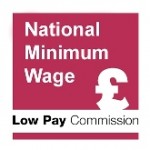Does the minimum wage have an impact on wage inequality? Do increases in the minimum wage help or hinder people moving into better-paid jobs? These were the questions posed by a major, two-part research project which the LPC published in December.
Each year, to support our recommendations to Government, we commission research looking at the effects of the rising minimum wage on individuals and employers. In December, we published the final report of a two-year project originally commissioned in 2018, looking at the effect of the National Living Wage (NLW) on wages. It was carried out by Silvia Avram from the University of Essex and Susan Harkness from the University of Bristol.
The first part of this work looked at the NLW’s effects on wage ‘spillovers’ – where an increase in the minimum wage helps not only the workers directly affected but also those earning slightly more, who also get a pay rise. The researchers estimated the level and extent of spillovers by looking at the wage distribution across regions. They did this by assessing variations across different ‘travel-to-work’ areas (a way of dividing up the country into different local labour markets) and controlling for other differences between areas.
The findings suggest that although only around 7 per cent of the workforce are paid the NLW, in the period to 2018 workers in the bottom 30 per cent of the pay distribution benefited directly or indirectly from it. The research finds that wages increased faster in areas with more minimum wage workers. A 1 per cent increase in minimum wage coverage is associated with a 2.0-2.5 per cent increase in wages at the 5th percentile, a 1.5-2.0 per cent increase at the 10th percentile and 1.0-1.5 per cent at the 30th percentile.
The second part of this work examined how the first two years of the NLW affected minimum wage workers’ ability to move into higher-paying, non-minimum wage jobs. The researchers divided jobs into three groups based on pay: minimum wage jobs; ‘low-paid’ jobs, paying above the minimum but less than two-thirds of the average wage; and ‘high-paid’ jobs, paying more than two-thirds of the average wage. Again, the research used variation in minimum wage coverage across areas to estimate the NLW’s effect on moves out of minimum wage employment.
The research found that around half of minimum wage workers moved into a job paid above the minimum wage each year, but most of these moves (around 80 per cent) are into ‘low-paid’ employment, with the remainder into ‘high-paid’ jobs. Over a three year period, moves to high-paid jobs occur only slightly more commonly than over a year.
The authors found limited evidence that the higher NLW had made it less likely that minimum wage workers would move into higher-paid jobs. Certain groups of minimum wage workers are more likely to progress into high-paid employment: those with higher levels of education, who work in the public sector or in large firms. On the other hand, some groups are less likely to do so: women, people with a history of unemployment and those working in part-time jobs. Spending more time in a minimum wage job is also associated with a lower likelihood of progressing into high-paid work.
Overall, the NLW has ‘compressed’ the pay distribution and reduced wage inequality; workers earning above the minimum receive faster increases than they would have done. But this compression has not led to more minimum wage workers becoming ‘stuck’ in relatively lower-paying jobs: the rising minimum wage has not affected the likelihood of minimum wage workers moving into higher-paid jobs. These are findings we’ll continue to track, with the second of these projects now extended to look at the effects on progression of the 2018 uprating to £7.83.
